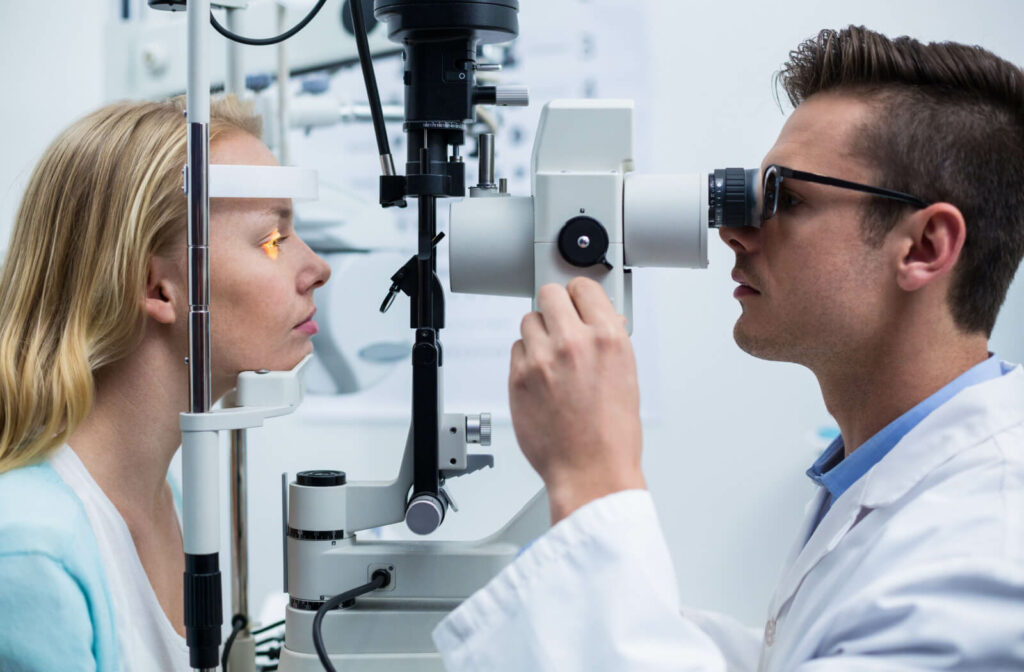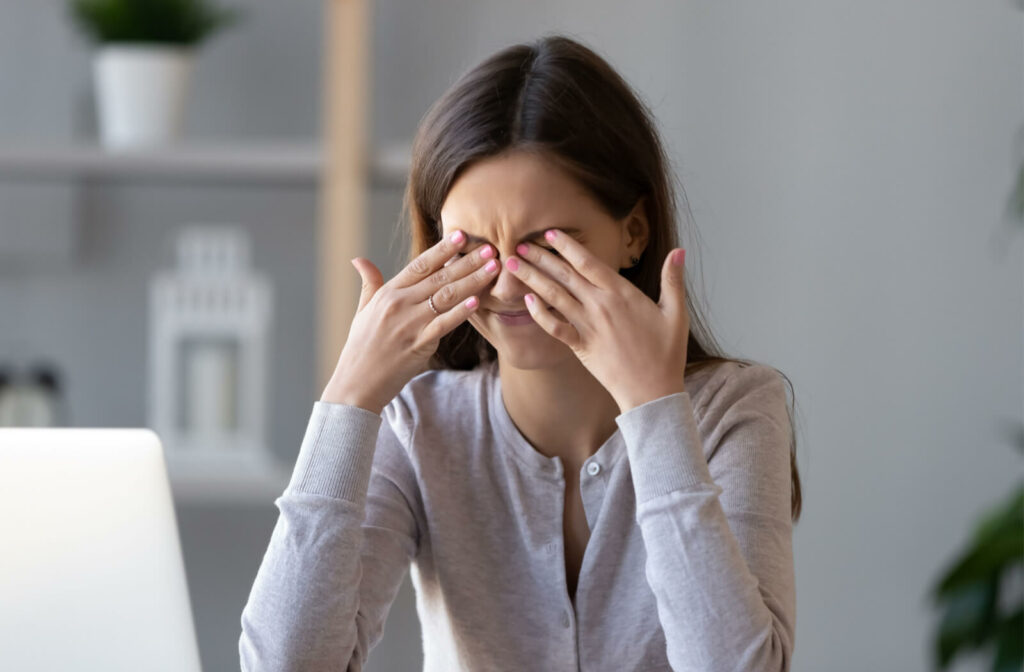Styes, also known as hordeola, are a common eye condition that can cause discomfort and pain, making you worry there’s something stuck in your eye you can’t get out. They occur when bacteria infect a gland on your eyelid or an eyelash follicle, forming a tender red bump.
A stye can cause blurred vision. However, this is typically only a temporary condition that usually lasts for a few days. However, if you experience persistent or recurrent vision changes, it’s important to visit your eye doctor to help ensure you’re not dealing with a more serious eye condition.
What Causes a Stye?
Styes have a lot in common with another skin condition, acne. Much like acne, a stye can form when one of the many tiny oil glands along your eyelids becomes inflamed. There are 2 types of styes:
- External Stye: External styes are the most common type of stye. They form on the outside of the eyelids and can occur on the top or bottom. Usually, an infection in your eyelash follicle causes an external stye.
- Internal Stye: Internal styes occur when an oil gland located inside the eyelid becomes infected. This can cause the bump to form facing your eyeball, which can be painful.
Anyone can develop a stye—they’re common in adults and children. However, adults could be more at risk since the oil adults produce is thicker than a child’s, making them more prone to blockages. Other factors that can increase your risk of developing a stye include:
- History of styes
- An inflammation of the eyelids called blepharitis
- Certain skin conditions, such as rosacea or dandruff
- Diabetes
- Dry skin
- Hormonal changes
- High “bad” cholesterol
What Are Stye Symptoms?
While the red bump on the eyelid is a recognizable signal that you’re dealing with a stye, it’s not the only one. Common stye symptoms include:
- Partial or total eyelid swelling
- Eyelid crust
- Light sensitivity
- General eye soreness
- Watery eyes
- Feeling like something is stuck in your eye
- Blurred vision
Styes & Blurred Vision
Blurred vision is commonly associated with styes developing on the eyelid margin or the inner surface of the eyelid. When a stye develops in these areas, the swelling and inflammation can push against the eye, resulting in blurred vision. The good news is that once the stye has been treated and the swelling subsides, your vision should return to normal.
It’s worth noting that blurred vision is not always a symptom of a stye, and it can be a sign of other, more serious eye conditions. If your blurred vision doesn’t go away once the stye does, it’s important to seek medical attention from an eye doctor. Conditions like astigmatism, cataracts, or glaucoma can cause blurred or distorted vision and require immediate attention.
How Does an Optometrist Styes Treat a Stye?
Most of the time, a stye will go away on its own in 1–2 weeks. Styes also aren’t considered contagious. Though you could spread the bacteria, you can avoid this by washing your hands and cleaning pillowcases.
However, some styes can be stubborn. So if your stye has been holding on past 2 weeks or seems to be getting worse, your eye doctor should step in.
Your optometrist may prescribe antibiotics to treat the stye—either eye drops, ointments, or sometimes oral antibiotics if the area around the eye is particularly sensitive. It’s important you complete the entire course of antibiotics even if your stye seems to have faded. This helps to prevent a relapse of the stye.
In some cases, the stye may become more severe and can cause prolonged pain and swelling. Your optometrist may opt to incise and drain your stye if it comes to this. This is done under local anesthesia in most cases and can help clean out the infection.
Reducing Stye Symptoms at Home
While you’re waiting for a stye to resolve itself, you don’t have to sit around fighting through the discomfort. Focus on reducing pain and swelling instead.
Use a Warm Compress
One of the easiest and most effective ways to reduce stye discomfort is applying warm compresses to the affected eye. Soak a clean washcloth in warm water, wring it out, and place it gently over the closed eyelid for 5–10 minutes, repeating the process several times a day. The warmth from the compress helps reduce swelling and increases blood flow to the affected area.
Some people prefer black or green tea bags, claiming the anti-inflammatory tannins in the tea help speed up the healing process. While there is some debate on the effectiveness, tea bags shouldn’t hurt (as long as you let them cool down after boiling) and are typically at least as effective as a warm washcloth.
Other Tips for Reducing Stye Symptoms
To avoid making the stye worse, keep the area clean and well-hydrated. Use mild soap or baby shampoo mixed with warm water to wash away any debris around your eye, then rinse it well.
While it can be tempting to pop the stye or touch the affected area, don’t do it! Touching the affected area can spread bacteria, leading to more painful and infected styes. Popping the stye can also cause the infection to spread, and it’s never a good idea.

Your Ally in Eye Health
Styes are unfortunately common, but you can help avoid them with good facial hygiene, such as washing your hands before touching your face and replacing eye makeup regularly. Styes can be unpleasant, but they are usually not a cause for concern, and the blurred vision they cause should resolve on its own.
If you have any concerns or if your symptoms worsen, don’t hesitate to call Total Vision Pasadena or book an appointment for an eye exam! Our team is ready to serve your family, whatever the eye and vision issue may be.




